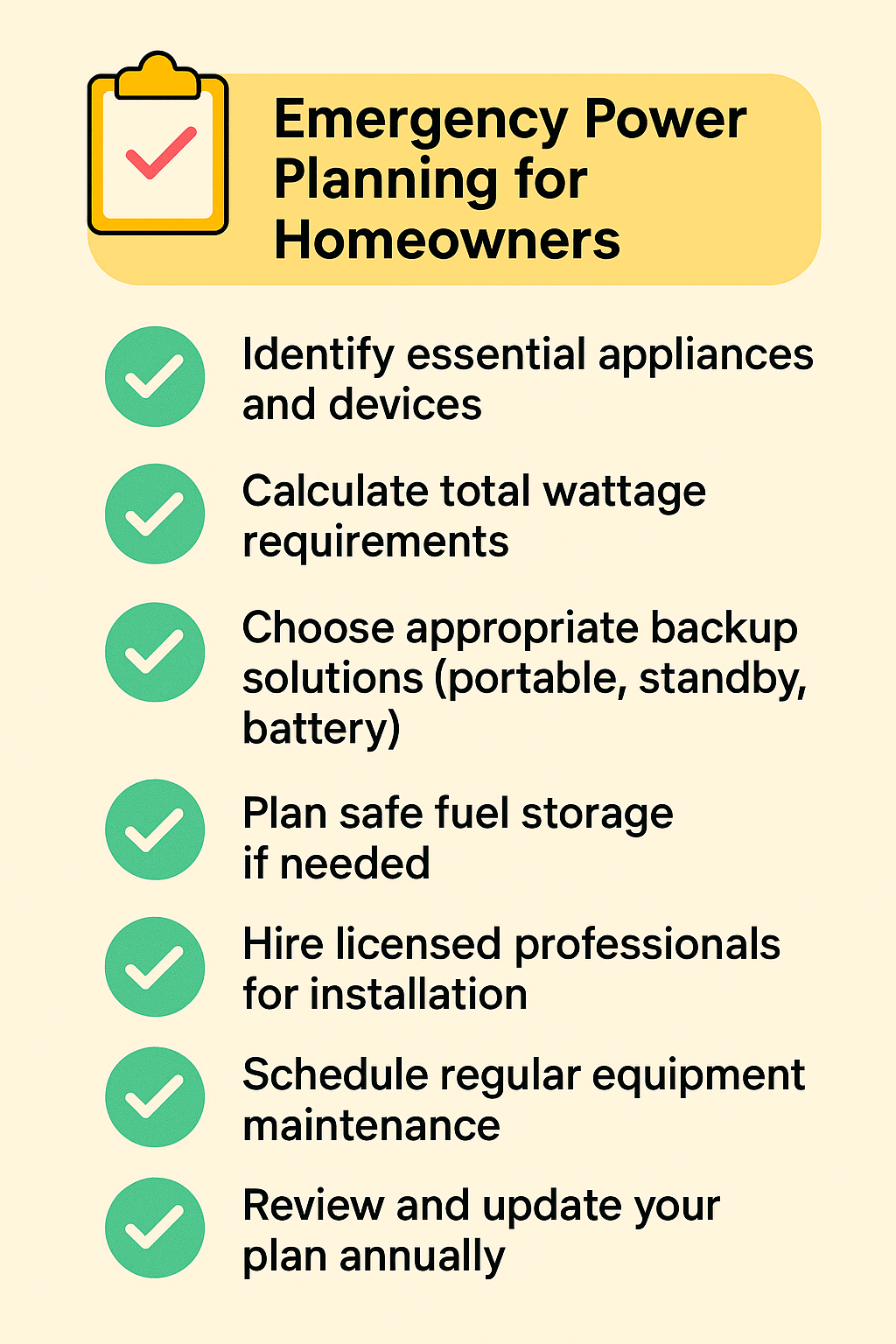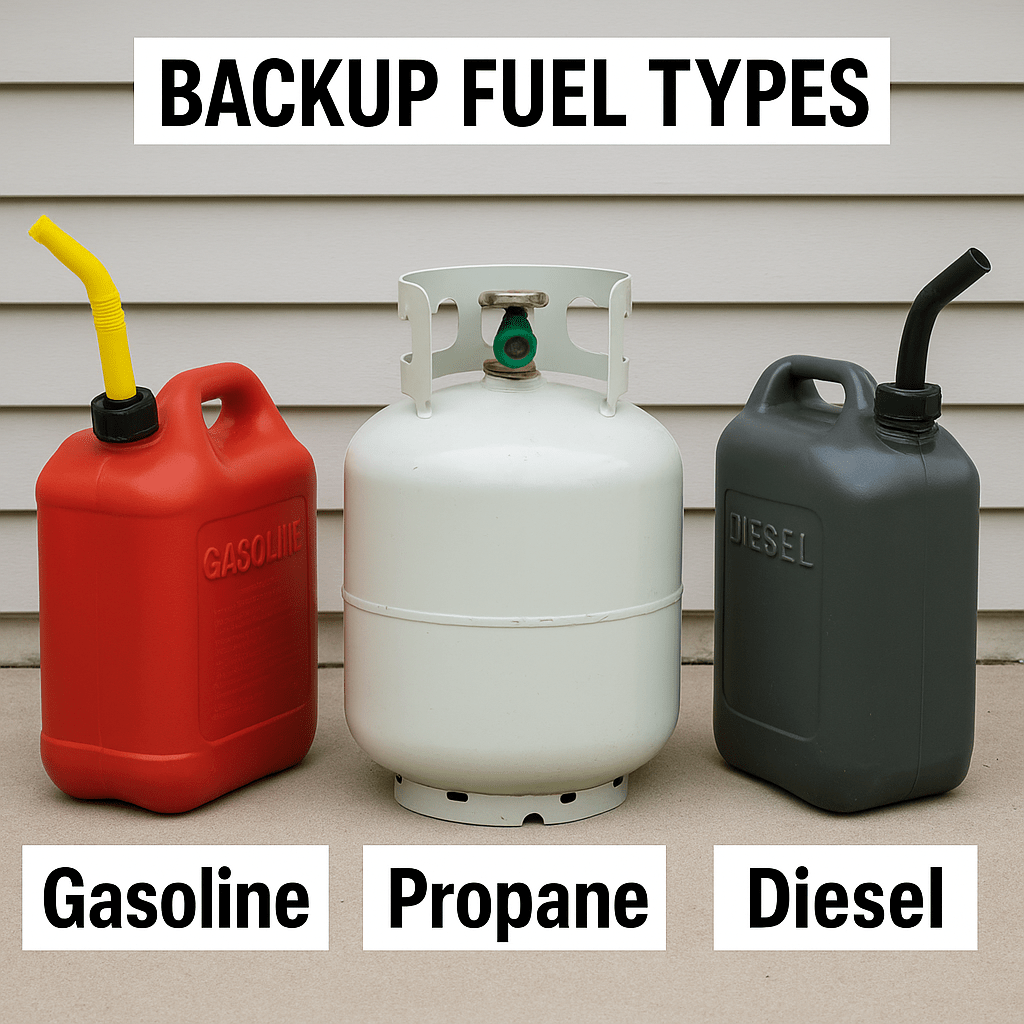Emergency Power Planning for Homeowners
Why Emergency Power Planning for Homeowners is Essential
 Imagine a sudden blackout leaving your home in complete darkness. Without preparation, a power outage can quickly become a dangerous event. Emergency power planning for homeowners ensures you can maintain safety, comfort, and communication during blackouts caused by storms, grid failures, or natural disasters.
Imagine a sudden blackout leaving your home in complete darkness. Without preparation, a power outage can quickly become a dangerous event. Emergency power planning for homeowners ensures you can maintain safety, comfort, and communication during blackouts caused by storms, grid failures, or natural disasters.
In this article, we’ll cover everything you need to know to create a reliable power plan for your home — from choosing the right equipment to smart storage tips.
Understanding Your Home’s Critical Power Needs
Before investing in backup power, homeowners must first understand their energy requirements. Not every appliance or device needs to stay on during a blackout.
Key items to prioritize include:
- Refrigerator and freezer
- Medical devices
- Heating and cooling systems (essential in extreme weather)
- Sump pumps (to prevent flooding)
- Lighting (especially in essential areas like kitchens and bathrooms)
- Communications equipment (phones, radios, routers)
Pro Tip:
Use an energy calculator (available from manufacturers like Generac) to estimate your home’s wattage needs.
Types of Backup Power Solutions for Homeowners
When planning for emergency power, it’s important to choose the right solution based on your home’s size, location, and family needs.
1. Portable Generators
Portable generators are cost-effective and versatile. They run on gasoline, propane, or dual-fuel systems and can power critical appliances through extension cords or a manual transfer switch.
However, they require manual setup, regular fueling, and safe outdoor placement to avoid carbon monoxide poisoning.
2. Standby Generators
Standby generators are permanently installed outside your home. They automatically kick on during an outage and can power your entire home or selected circuits.
Benefits include:
- Automatic operation
- Long runtimes
- Professional installation ensures code compliance
Brands like Kohler and Briggs & Stratton offer reputable standby systems.
3. Battery Backup Systems
Battery systems, like Tesla’s Powerwall, store solar or grid electricity for later use. They’re silent, emission-free, and require minimal maintenance.
Important: Battery capacity is limited, so prioritize only essential loads.
Fuel and Storage Considerations
 Choosing the right fuel type is critical for effective emergency power planning.
Choosing the right fuel type is critical for effective emergency power planning.
Common fuel options:
- Gasoline: Widely available but degrades after 3–6 months.
- Propane: Clean-burning, long shelf-life, and easy to store in bulk.
- Natural Gas: Unlimited supply if your home is connected to a municipal line.
- Diesel: More energy-dense but requires treated storage to prevent spoilage.
Storage Tips:
- Rotate stored fuel every 6 months.
- Store in certified, ventilated containers.
- Never store fuel inside your home.
Installation and Maintenance Essentials
Proper installation and maintenance ensure your backup system works when you need it most.
Installation tips:
- Hire licensed electricians for generator or transfer switch installation.
- Secure permits if required by local regulations.
- Install carbon monoxide detectors near sleeping areas.
Maintenance checklist:
- Run generators monthly under load.
- Change oil and filters regularly.
- Test battery backups quarterly.
For further maintenance guidance, see our related article: Generator Maintenance Guide for Homeowners
Common Mistakes in Emergency Power Planning
Even well-intentioned homeowners sometimes make critical mistakes. Avoid these pitfalls:
- Underestimating total power needs.
- Storing fuel improperly or insufficiently.
- Neglecting regular equipment testing.
- Overloading circuits by plugging too many appliances into a portable generator.
Remember: Careful planning today prevents serious problems tomorrow.
Checklist: Emergency Power Planning for Homeowners
Here’s a quick action list to get started:
✅ Identify essential appliances and devices.
✅ Calculate total wattage requirements.
✅ Choose appropriate backup solutions (portable, standby, battery).
✅ Plan safe fuel storage if needed.
✅ Hire licensed professionals for installation.
✅ Schedule regular equipment maintenance.
✅ Review and update your plan annually.
Download our free printable Home Power Planning Checklist here (internal link).
Resources for Further Learning
- Ready.gov – Power Outages
- Consumer Reports – Generator Buying Guide
- National Fire Protection Association (NFPA) – Generator Safety
These resources offer in-depth guidance on creating resilient emergency power plans.
Final Thoughts: Protect Your Family with Smart Emergency Power Planning
Effective emergency power planning for homeowners isn’t just about convenience; it’s about protecting your family’s safety, health, and well-being during unpredictable events. By taking the time to plan and invest in the right backup systems now, you’ll be ready when the lights go out.